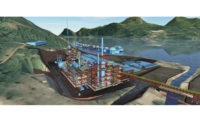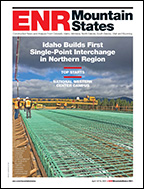British Columbia is planning to improve a 100-km stretch of scenic highway linking West Vancouver to Whistlerthe remote winter ski resort high in the Canadian Rockies and the site of the 2010 Winter Olympics.
The $451-million design-build "Sea-to-Sky" project, part of the provinces Olympian preparation, will pit workers against "very rugged terrain," says Peter Milburn, executive project director for the Ministry of Transportation (MOT). The plan is to widen the two-lane winding highway yet keep it open to 14,000 vehicles a day during the five years of construction. Instead of rock blasting on the mountain side, "we are widening it on the ocean side," says Milburn.
|
Interested firms attended an informational meeting Feb. 6. Requests for qualifications will follow. The contract will be a public-private partnership, or P3, with the design-builder responsible for 20 years of maintenance. The current cost of maintaining the two-lane highway is about $4.5 million a year.
The contract will include performance incentives. "For example, we will pay the contractor based on how safe the road turns out to be, since this is the primary reason for the project," says Milburn.
The plan calls for a split-grade alignment so that upslope excavation can be minimized on the sheer cliffs. Relying on retainer and median walls, construction of a downslope bench will proceed first. The upper bench then will be upgraded with traffic diverted to the new lower bench. Ultimately, the two benches will each carry two lanes. Field-testing of the design approach on a 1-km section of road is "so far, so good," says Milburn.
According to MOT, the new design will encourage slower speeds with a curvilinear roadway so that drivers will be less likely to accelerate in straight sections and then abruptly slow down at curves. Traffic volume on the road may increase by as much as 62% by the year 2025, says a study by TSI Consultants, Burnaby.



Post a comment to this article
Report Abusive Comment